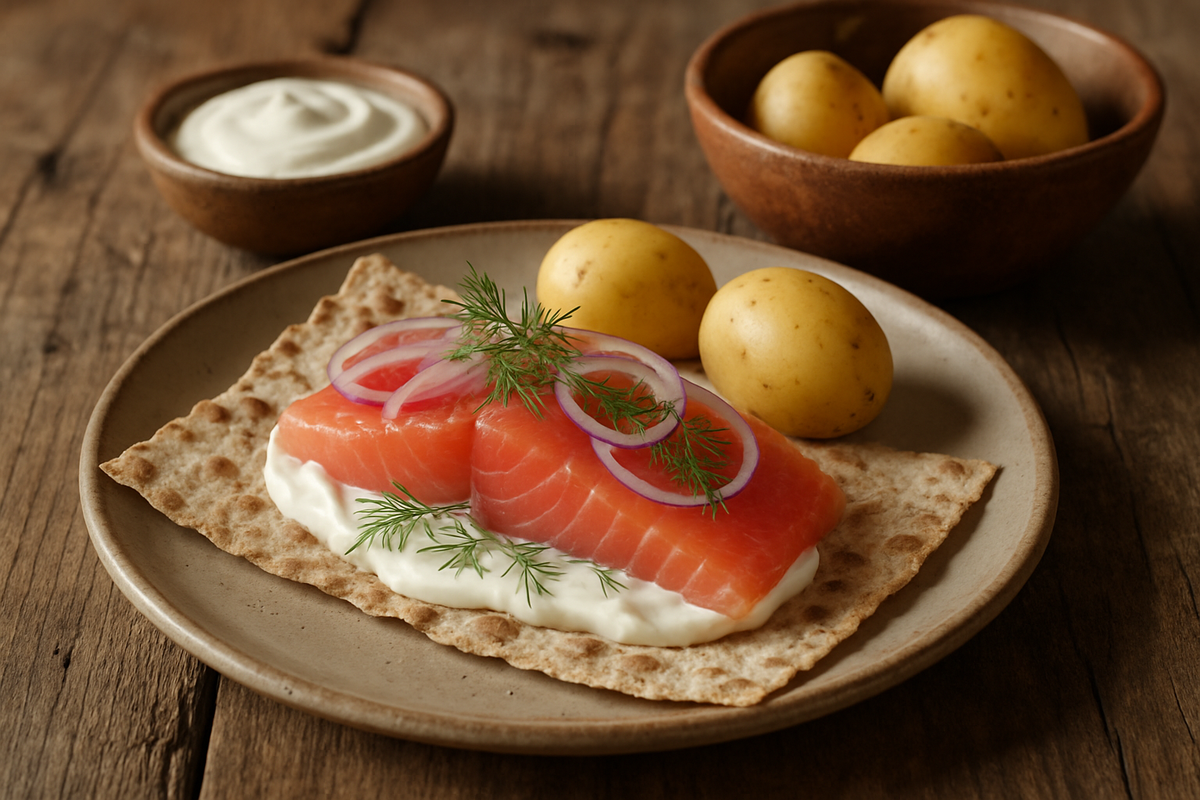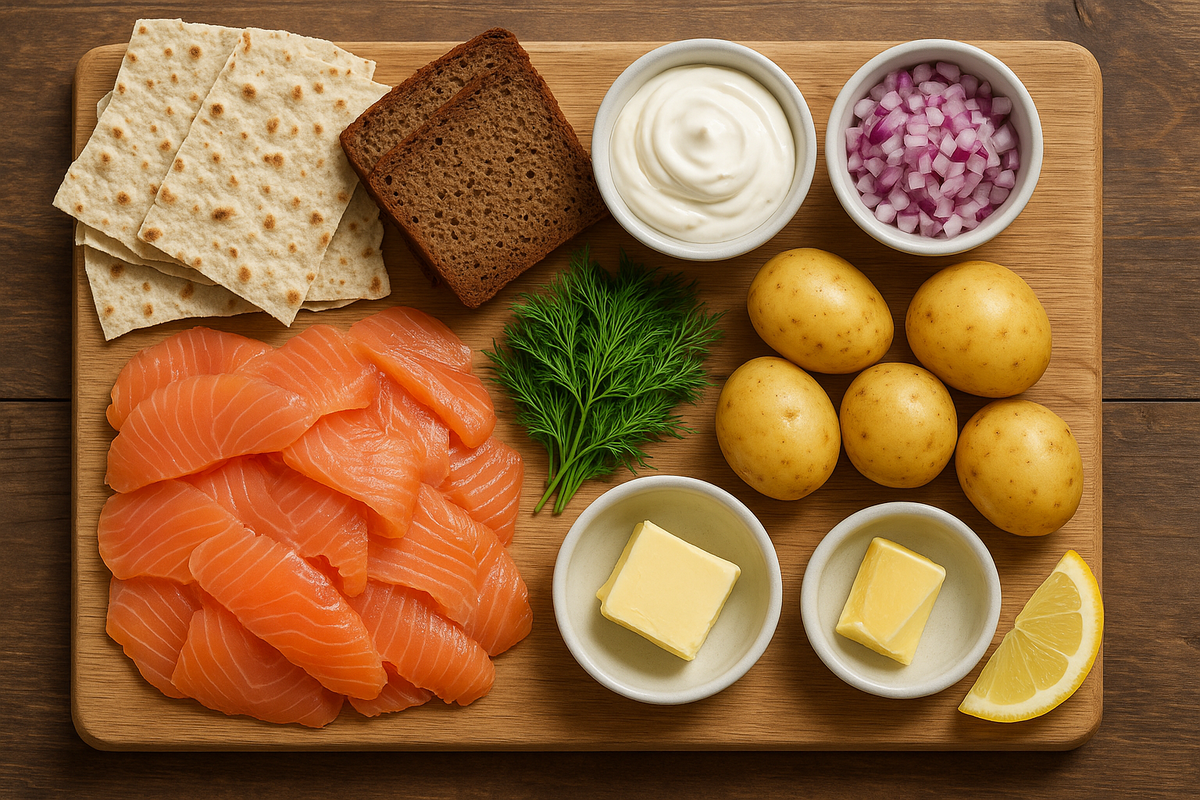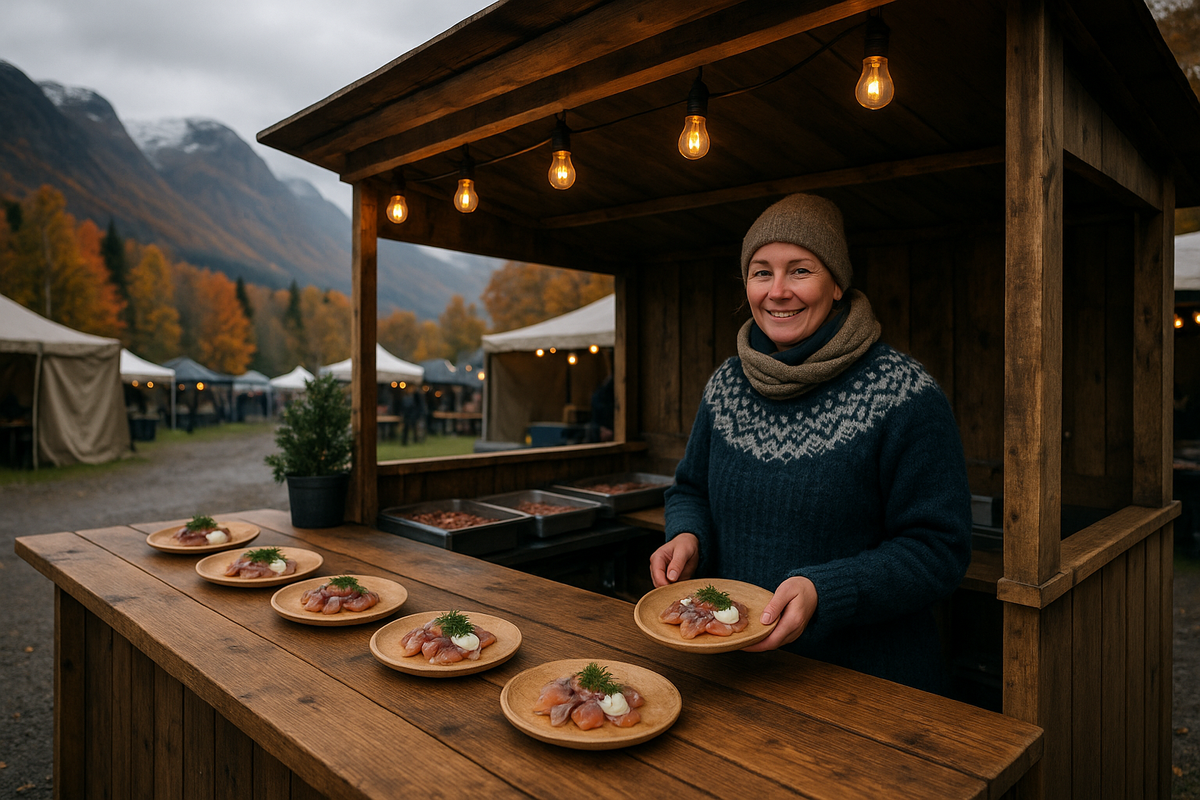Rakfisk: fermented trout from Norway — a delicacy for the brave
In every corner of Norway, you can find dishes that are only suitable for the most adventurous foodies. One such dish is Rakfisk — fermented trout, whose unique, sometimes exotic name evokes both admiration and scepticism among most tourists. Once you try Rakfisk, you will never forget its taste and smell. And although this dish often causes controversy among tourists, it is an integral part of Norwegian culinary tradition. In this article, we will tell you about this unique product, how to prepare it and what to eat it with.

What is Rakfisk and how is it prepared?
Rakfisk is trout that is salted and fermented for several months in special airtight containers. The fermentation process takes place at low temperatures (between +2°C and +4°C), during which the fish acquires an unusual sour-salty taste and a jelly-like texture. During fermentation, changes occur in the fish that make it safe to eat, but it is precisely these changes that give Rakfisk its unusual taste and smell.
The history of Rakfisk and its popularity in Norway
Rakfisk has been a popular dish among Norwegians since the 19th century, when fermentation was necessary to preserve fish during the long winters. Today, this dish has become not only part of the tradition, but also a real culinary pride of Norway. Special festivals, such as Rakfiskfestivalen in Valdres, are dedicated to this dish and attract tourists from all over the world who want to try it in its best variations.

How to eat Rakfisk correctly?
There are several rules for enjoying Rakfisk properly:
- Serve with rye bread — Rakfisk is traditionally served with dark rye bread or flatbrød.
- Add sour cream or butter — many Norwegians like to top Rakfisk with sour cream or melted butter.
- Garnish with onion and dill — finely chopped onion and fresh dill add extra flavour and aroma.
- Wash it down with aquavit — for those who want to try Rakfisk the authentic way, Linie aquavit or beer are traditional drinks to accompany the dish.
How to make Rakfisk at home?
Ingredients:
- 1 trout (1–1.5 kg), cleaned
- 2 tablespoons salt
- 1 tablespoon sugar
- 1 tsp ground black pepper
- 1 teaspoon cumin (optional)
Preparation:
- Place the trout in a clean container (e.g. a saucepan or glass jar).
- Mix the salt, sugar, pepper and cumin (if using) and rub the mixture evenly over the fish.
- Cover the container and leave the fish for 2–3 days at a temperature of around +4°C, then transfer to a cooler place (e.g. the fridge) and leave to ferment for 2 weeks.
- After fermentation, Rakfisk is ready to eat. Serve with bread, sour cream and onions.
Where to try Rakfisk in Norway?
| Location | Establishment | Special | Price (2025) |
|---|---|---|---|
| Valdres (Rakfiskfestivalen) | Local farmers | Straight from the festival, freshly fermented | 200 NOK/serving |
| Oslo (Fiskeriet) | Restaurant and fish market | Fresh Rakfisk with rye bread | 145 NOK/serving |
| Tromsø (Emma’s Drømmekjøkken) | Restaurant | Rakfisk served with potatoes and dill | 160 NOK/serving |
| Bergen (Bryggeloftet & Stuene) | Traditional cuisine restaurant | Exclusive Rakfisk made according to a regional recipe | 185 NOK/serving |

How to serve Rakfisk and what drinks to choose?
Rakfisk is traditionally served with rye bread and sour cream. Boiled potatoes or a fresh vegetable salad are excellent side dishes.
- Drinks: Linie aquavit (cold, with a slightly salty taste) or beer. For non-alcoholic options, northern berry fruit punch is a good choice.
Rakfisk is not just fish, but a culinary adventure that introduces you to the history, culture and traditions of Norway. This fermented delicacy reflects the rugged beauty of the Norwegian fjords and the tradition of preserving food. Try Rakfisk at the festival in Valdres or at one of Oslo's restaurants, and you'll understand why this aroma and taste are so special to Norwegians.





2 comments
Log in to leave a comment